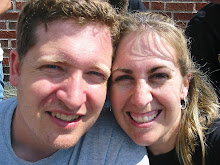I almost titled this post Looooong month but decided I need to quit complaining. I think most of our new people have settled in and feel somewhat comfortable. I am still worried about our new Korean research fellow. He is certainly bright enough to do the work (an MD PhD) but he either doesn't understand me well enough or he just isn't listening. We'll get through this.
Lately I have been doing some experiments with some mice that have been bred to have a mutated NF2 (Merlin) gene. Merlin is the tumor suppressor protein on which we focus the majority of our efforts. We know that when this protein is missing or when certain areas of the protein are mutated, schwannomas, menigiomas, and several other 'omas develop. So what I have been doing is harvesting sciatic nerves and isolating protein. Following the isolation protocol, I am probing the tissue lysate for two receptors that are potentially upregulated in cells without properly functioning Merlin. One of the things that we know based on earlier evidence from our lab (and others) is that one of these receptors, ErbB2, is localized to an area of the cell membrane that is enriched in cholesterol and other lipids. These areas are called lipid rafts and have been shown to be rich in certain types of receptors. The problem with lipid rafts is that they are very difficult to solubilize without the use of harsh surfactants. I have prepared two lysate fractions, a Triton X-100 (a light surfactant) soluble fraction and an SDS (a harsh surfactant, also called Lauryl Sulfate - see your shampoo bottle) soluble fraction. I have run them both out on a polyacrylamide gel, transferred the proteins to nitrocellulose and finally probed the membrane for my receptors with antibodies. Unfortunately, I have been largely unsuccessful to this point. Today I am finishing up an immunoprecipitation of ErbB2 in an effort to enrich the sample I am loading onto my gels. It is a fairly straight forward proceedure. I simply incubated my lysates with the ErbB2 antibody overnight in the cold room and then incubated my antibody:antigen complexes with very small beads that bind to the complex. After washing off any contaminates, I will elute ErbB2 by boiling the beads in a buffer and collecting the buffer. Hopefully, this final buffer will be enriched in ErbB2. I will run the gel tonight and do the Western blot tomorrow. If this works, we will be on our way to getting this project off the ground.
Tuesday, October 6, 2009
Subscribe to:
Posts (Atom)
